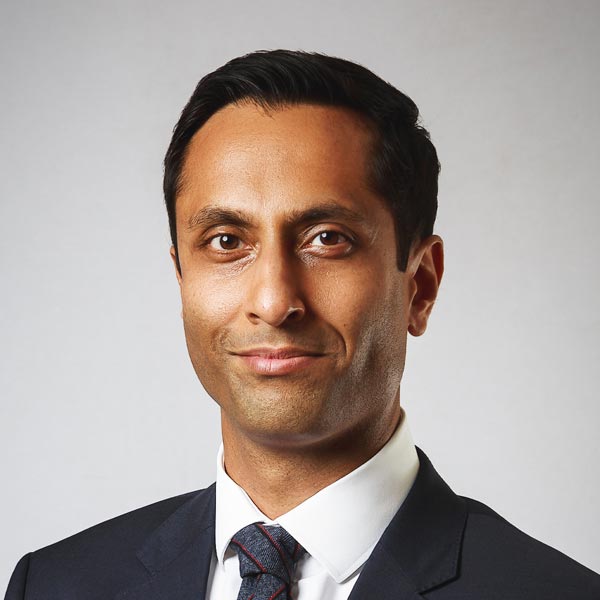[ultimate_heading main_heading=”Why might I need Knee Osteotomy surgery?” heading_tag=”h3″ main_heading_color=”#002245″ alignment=”left” main_heading_font_family=”font_family:Lato|font_call:Lato|variant:regular” main_heading_style=”font-weight:normal;font-style:normal;” main_heading_margin=”margin-top:0px;margin-bottom:10px;” main_heading_font_size=”desktop:22px;” main_heading_line_height=”desktop:28px;”][/ultimate_heading]
Knee osteotomy or knee realignment surgery is carried out on patients experiencing a range of knee conditions, including arthritis and sports-related injuries.
You might need this type of surgery if you are:
- Bow-legged – this can result in damage from arthritis to the inner side of the knee joint. Alignment surgery is known as ‘high tibial osteotomy’ where the top part of the shin bone is realigned. Around 80% of Adrian’s realignment procedures are for bow-legged patients.
- Knock-kneed – this can result in damage from arthritis to the outer side of the knee joint. Alignment surgery is known as ‘femoral osteotomy’ where the bottom part of the thigh bone is realigned.
[ultimate_heading main_heading=”What does Knee Osteotomy surgery involve?” heading_tag=”h3″ main_heading_color=”#002245″ alignment=”left” main_heading_font_family=”font_family:Lato|font_call:Lato|variant:regular” main_heading_style=”font-weight:normal;font-style:normal;” main_heading_margin=”margin-top:0px;margin-bottom:10px;” main_heading_font_size=”desktop:22px;” main_heading_line_height=”desktop:28px;”][/ultimate_heading]
Professor Adrian Wilson has pioneered a minimally invasive technique for osteotomy that enables patients to get back to normal activities as quickly as possible. All the results of surgery are carefully monitored so that the treatment is evidence based. In many cases, the results are comparable to joint replacement surgery.
X-rays will determine the position of the bones in your leg to see the correction required to realign your knee.
- If you are bow-legged, surgery involves a wedge being cut into the bone, using precise measurements calculated during a pre-surgery scan. The bone is then pulled slightly apart and fixed into the correct position using a metal plate and pins. The whole leg is realigned during surgery to prevent further damage to the knee.
- If you are knock-kneed, surgery involves making cuts into the bone, using precise measurements calculated during a pre-surgery scan. Plates and pins are used to fix the bone into its new position. The whole leg is realigned during surgery to prevent further damage to the knee.
[ultimate_heading main_heading=”An osteotomy patient talks about their operation performed by Professor Adrian Wilson and Mr Raghbir Khakha” heading_tag=”h4″ main_heading_color=”#002245″ alignment=”left” main_heading_font_family=”font_family:Lato|font_call:Lato|variant:regular” main_heading_style=”font-weight:normal;font-style:normal;” main_heading_margin=”margin-top:0px;margin-bottom:10px;” main_heading_font_size=”desktop:22px;” main_heading_line_height=”desktop:28px;”][/ultimate_heading]
[ultimate_heading main_heading=”What are the advantages of knee osteotomy over knee replacement surgery?” heading_tag=”h3″ main_heading_color=”#002245″ alignment=”left” main_heading_font_family=”font_family:Lato|font_call:Lato|variant:regular” main_heading_style=”font-weight:normal;font-style:normal;” main_heading_margin=”margin-top:0px;margin-bottom:10px;” main_heading_font_size=”desktop:22px;” main_heading_line_height=”desktop:28px;”][/ultimate_heading]
In the UK, the vast majority of patients with arthritis are offered knee replacement surgery. For younger patients where the wear and tear is very severe or even where there is significant bone on bone disease (in some cases, down to the bone), the only traditional options would have been to either put up with pain or have steroid injections, which usually provide only temporary benefit.
While knee replacement surgery may be the answer for some people, for others – particularly younger patients, sportsmen and women, and older patients who are very active – removing the knee joint, which also means taking away a great deal of healthy tissue, may not be the best option. Osteotomy can usually significantly delay the need for knee replacement surgery (although patients may need this procedure to treat advanced arthritis later on, most commonly 10-15 years later); in some cases, it can avoid the need for knee replacement altogether.
The main advantages of osteotomy over knee replacement include:
- Reduced knee pain without needing to remove/replace your knee joint
- A better range of movement and function
- Faster recovery
- The knee can feel more stable than after knee replacement surgery
- You can return to your normal activities including competitive sport, which isn’t recommended after a knee replacement as it can wear out the artificial joint
- You are not having anything replaced, you keep your own knee.
[ultimate_heading main_heading=”How long does it take to recover from knee osteotomy?” heading_tag=”h3″ main_heading_color=”#002245″ alignment=”left” main_heading_font_family=”font_family:Lato|font_call:Lato|variant:regular” main_heading_style=”font-weight:normal;font-style:normal;” main_heading_margin=”margin-top:0px;margin-bottom:10px;” main_heading_font_size=”desktop:22px;” main_heading_line_height=”desktop:28px;”][/ultimate_heading]
Most people are able to bear their own weight within 24 hours while full rehabilitation takes between 6-12 weeks. Unless your job is highly active or involves manual labour, you are likely to be able to return to work after six weeks.
[ultimate_heading main_heading=”What is the long-term impact of knee osteotomy?” heading_tag=”h3″ main_heading_color=”#002245″ alignment=”left” main_heading_font_family=”font_family:Lato|font_call:Lato|variant:regular” main_heading_style=”font-weight:normal;font-style:normal;” main_heading_margin=”margin-top:0px;margin-bottom:10px;” main_heading_font_size=”desktop:22px;” main_heading_line_height=”desktop:28px;”][/ultimate_heading]
Elite sportsmen and women have been able to return to normal following an osteotomy and, having regained their fitness levels, they’ve gone on to compete successfully. This includes one elite triathlon runner who, after having his osteotomy surgery, went on to become the top ranked sportsman in his age group.
[ultimate_heading main_heading=”London Knee Osteotomy Centre” heading_tag=”h3″ main_heading_color=”#002245″ alignment=”left” main_heading_font_family=”font_family:Lato|font_call:Lato|variant:regular” main_heading_style=”font-weight:normal;font-style:normal;” main_heading_margin=”margin-top:0px;margin-bottom:10px;” main_heading_font_size=”desktop:22px;” main_heading_line_height=”desktop:28px;”][/ultimate_heading]
The London Knee Osteotomy Centre at The Wellington Hospital in London brings together world-renowned surgeons from across the UK and Europe.
The Centre is led by Professor Adrian Wilson who has a global reputation in carrying out knee realignment (osteotomy) surgery. Collectively, the London Knee Osteotomy Centre team have performed more than 700 knee osteotomy procedures across the UK and Europe.
All consultants at The London Knee Osteotomy Centre are globally recognised leaders in their specialist field of medicine, with many managing departments and clinical teams in distinguished London teaching hospitals and centres of excellence across Europe.
They are supported by a multidisciplinary team of anaesthetists, radiologists, specialist physiotherapists and the very latest state-of-the-art diagnostic imaging technology, contributing to a fast and accurate diagnosis for patients.
[ult_content_box box_shadow=”horizontal:px|vertical:px|blur:px|spread:px|style:none|” hover_box_shadow=”horizontal:px|vertical:px|blur:px|spread:px|style:none|” padding=”padding-top:35px;padding-right:35px;padding-bottom:15px;padding-left:35px;” margin=”margin-top:20px;” bg_color=”rgba(163,221,210,0.5)”]
[/ult_content_box]










